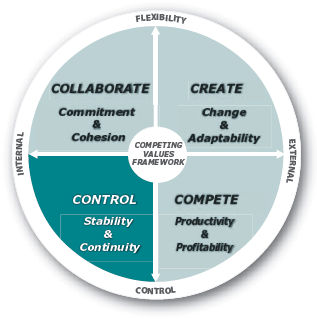Chapter 2. Establishing and Maintaining Stability and Continuity

COMPETENCIES
Organizing Information Flows
Working and Managing Across Functions
Planning and Coordinating Projects
Measuring and Monitoring Performance and Quality
Encouraging and Enabling Compliance
Joining an organization gives us an opportunity to work toward significant outcomes that we could not accomplish individually. To make that opportunity a reality, members must find ways to coordinate their activities. Complete flexibility without any control would result in chaos.
Organizational Goals. Just as commitment and cohesion are important for the success of organizations, so, too, are stability and continuityâthe goals associated with the internal process model. Control is the action imperative of the internal process model based on the assumption that routinization will lead to stability and continuity. Key activities tend to be focused on internal issues and include defining responsibilities and measuring and documenting performance.
Paradoxes. While these activities are important, managers who create complex control systems often discover that excessive constraints on workers can paradoxically undermine the welfare of the organization. Similarly, an overemphasis on control also can result in getting the details right but failing to accomplish broader objectives. The paradoxical need to accomplish special projects ...
Get Becoming a Master Manager: A Competing Values Approach, Fifth Edition now with the O’Reilly learning platform.
O’Reilly members experience books, live events, courses curated by job role, and more from O’Reilly and nearly 200 top publishers.

